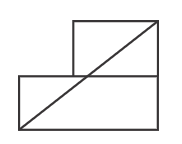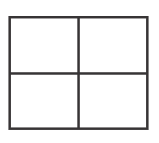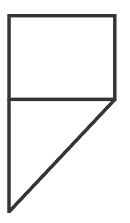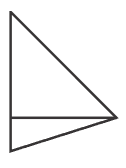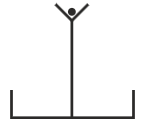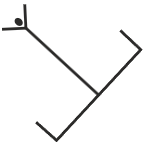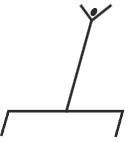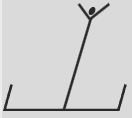Logical Reasoning: Topics, Questions with Answers, Examples
Logical Reasoning is an important part of almost all major competitive government, college entrance, and campus placement exams conducted across the country and is one of the highest-scoring sections as well. The aspirants who are preparing for the upcoming competitive exams can find all the topics in this article which are asked in Logical Reasoning. In this article, we will cover tips and tricks to solve logical reasoning verbal and non-verbal questions and sample questions for the reference of the aspirants. The aspirants can find various e-books of logical reasoning questions with answers pdf in this article which are beneficial for the aspirants from the examination point of view. As the MAH MBA CET is approaching, students can attempt the latest Free Mock Test designed for the aspirants by our experts to score a high percentile in the exam.
CAT 2024: 20 Free Mock Test | 10 Year PYQs | 60 Day Study Material | Most Scoring Concepts
XAT 2025: Section-wise Preparation Tips | Sample Paper
Don't Miss: IBSAT 2024 Mock Tests | NMAT 2024 Sample Papers | MAT 2024 Sample Papers
Question with Solutions: Missing Number | Alphabet Test | Arithmatical Problems | Calendar
- What is Logical Reasoning?
- Types of Logical Reasoning
- Why is Logical Reasoning important?
- Five Steps to Solve Reasoning-Based Questions
- Logical Reasoning Topics
- Logical Reasoning Sample Questions with Answers
- Tips and Tricks to Solve Logical Reasoning Questions
- Logical Reasoning Questions for Order and Ranking
- Logical Reasoning Questions for Missing Numbers
- Logical Reasoning Questions for Arithmetical Problems
- Logical Reasoning Questions for Alphabet Test
- Logical Reasoning: Important Exams
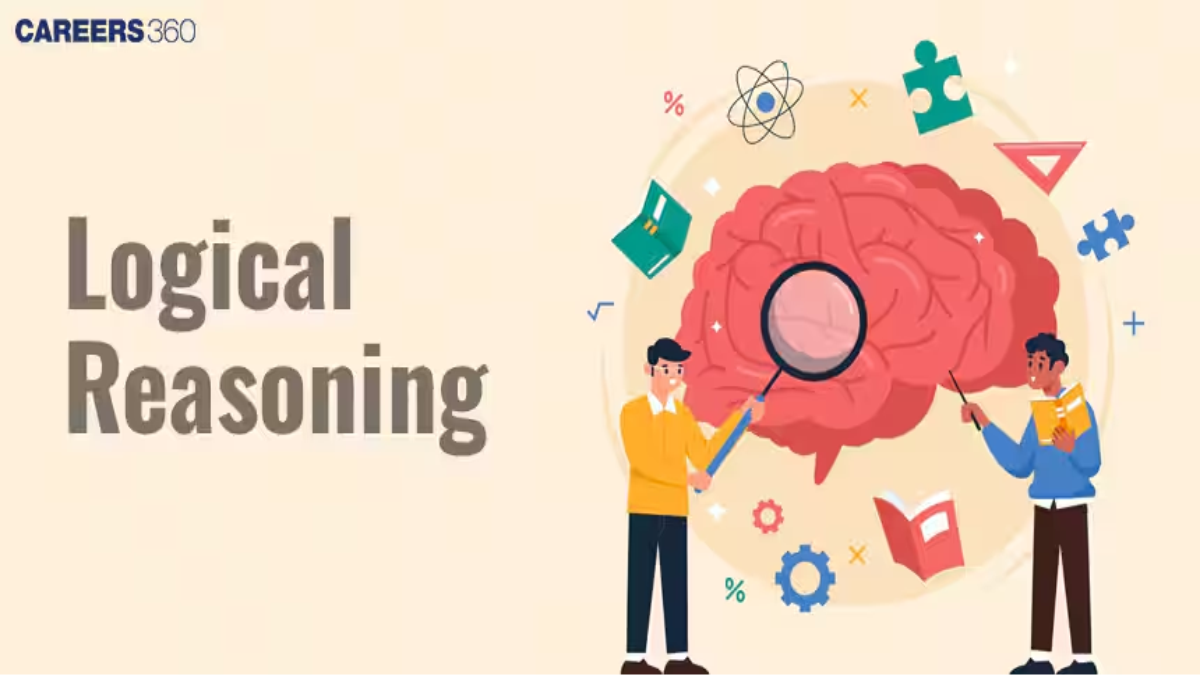
What is Logical Reasoning?
Logical reasoning is defined as the ability to think logically, analyse situations and make logical and precise judgements. It is a type of problem-solving approach which works under some set of rules to reach an accurate conclusion. It is basically of two types as mentioned below.
Types of Logical Reasoning
Verbal Reasoning: It is defined as the test which evaluates the ability of a person to reach valid conclusions from the given information. It is a capacity to comprehend and logically think over concepts and statements stated in words.
Non-verbal reasoning: It is defined as the test which evaluates the ability of a person to analyse visual data and solve problems expressed in numbers/letters/figures in combination with words using visual reasoning.
Why is Logical Reasoning important?
Logical reasoning is an important skill that a person can use during all kinds of daily situations along with other cognitive skills. It helps in making important decisions, discerns the truth, solves problems, comes up with new ideas and sets achievable goals. It is asked in almost all competitive exams to check the candidate’s interpretation skills concerning patterns, figures and facts. It helps candidates in improving their decision-making skills, problem-solving skills and setting goals.
The logical reasoning section comprises various topics which include the following types of questions:
Verbal Questions – These types of questions can be solved verbally if a person understands the logic behind the given information and practices several questions of all verbal reasoning topics for that person no pen-paper solution is required.
Sequence Questions – These types of questions can be solved by implementing mathematical formulas or by analysing the information. In such types of questions a series or sequence of objects/people/numbers/alphabets, etc. is given and questions based on the same are asked.
Puzzle Questions – These types of questions are based entirely on logical analysis of the information given in the puzzle question. It includes seating arrangement or arranging people/days/months/places, etc. in different forms.
Image-Based Questions – These types of questions are based on the images as some figures are given as a problem figure and a person has to identify the required figure. It may be water images, mirror images or paper construction-based images. Sometimes sequence pattern questions are also asked based on the images.
Five Steps to Solve Reasoning-Based Questions
The following steps are required to solve the Logical Reasoning questions:
Read the information thoroughly as a thorough reading of information makes a better understanding.
Analyse the logical facts and figures in the information.
Write down the important points and think of all the possible answers following the logical reasoning rules.
Now choose the answer obtained with other possibilities.
Come to an accurate logical conclusion. Rest it also depends on your ability to solve a logical reasoning question.
For more information or a better understanding of logical reasoning topics check the linked pages below.
Logical Reasoning Topics
Logical Reasoning Sample Questions with Answers
To learn a topic and get clarity on a particular topic a candidate has to understand the concept even better by solving questions based on them. A candidate has to solve several questions to get more clarity on the topic. There are a few examples below for the reference of candidates, we have combined a few examples from both the verbal and non-verbal logical reasoning topics with explanations so that the candidates can solve them and analyse the type of questions which may be asked in this section.
Sample Questions on Verbal Reasoning
Q-1) Find the odd one out.
A) 121-144
B) 1444-1521
C) 1024-1156
D) 441-484
Solution:
In the above-given pairs, all pairs are squares of natural numbers
First Option: 121-144; (11 x 11) (12 x 12)
Second Option: 1444-1521; (38 x 38) (39 x 39)
Third Option: 1024-1156; (32 x 32) (34 x 34)
Fourth Option: 441-484; (21 x 21 ) (22 x 22)
All number pairs are squares of consecutive numbers except option third as in the third option a square of 34 is given instead of a square of 33.
Hence, the third option is correct.
Q-2) How many letters are there between the eighth letter from the left and the fourth letter from the right?
A Q W E R T S D C F S R F H J K L B N M X Z U
A) 2
B) 8
C) 7
D) 13
Solution:
Eighth from the left is - D
Fourth from the right is - M
Number of letters between D and M = 11 letters
Hence, the third option is correct
Q-3) Which one of the given alternatives is always associated with ‘justice’?
(A) Legitimate
(B) Hypocrisy
(C) Judgement
(D) Magnamimity
Solution:
Justice can be given according to law only. Hence, the first option is correct.
Sample Questions on Non-Verbal Reasoning
Q1. Directions: Two different positions of the same dice are shown. Select the letter that will be on the face opposite to the one having A.

A) B
B) F
C) N
D) Z
Solution: Two different positions of a dice are given with one face common, ‘Z’ and the sixth face is A. So, move in the clockwise direction from the common face Z as shown below to get the opposite pair of faces.
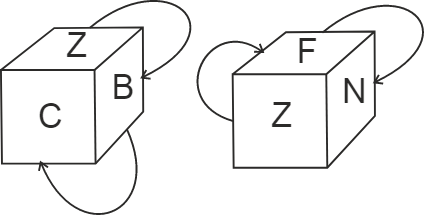
So, the pair of opposite faces - (B⇔F); (C⇔N); (Z⇔A).
Therefore, the opposite face of the A is Z. Hence, the fourth option is correct.
Q-2) Directions: Select the option figure that is embedded in the given figure (rotation is NOT allowed).
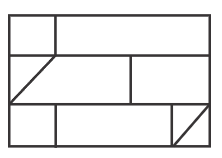
Solution- Since the rotation of the figure is not allowed, let's check which option figure can exactly fit itself in the given question figure.
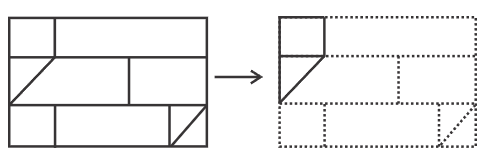
From the above, it is clear that the third option figure is embedded in the given question figure. Hence, the third option is correct.
Q-3) Directions: Find the odd figure from the given alternatives.
Solution- Let's check each option –
First option: In this figure, the bottom two vertical lines are above the bottom horizontal line.
Second option: In this figure, the bottom two vertical lines are above the bottom horizontal line.
Third option: In this figure, the bottom two vertical lines are below the bottom horizontal line.
Fourth option: In this figure, the bottom two vertical lines are above the bottom horizontal line.
Therefore, the figure in the third option is different from the others. Hence, the third option is correct.
Tips and Tricks to Solve Logical Reasoning Questions
The aspirants can follow various tips and tricks given below for solving the logical reasoning questions.
Tip 1: First of all you should understand the type of question and it is a must that you should be familiar with common logical reasoning question types, such as blood relation, coding-decoding, logical deduction, syllogism, order and ranking and pattern recognition. Knowing the question type helps you approach the problem strategically.
Tip 2: Now you should break down the information given in the question and analyse the given information. After breaking down the information into smaller points identify the main points, assumptions, and conclusions. This helps you to understand the problem in a better way and makes it easier to solve.
Tip 3: You should draw diagrams for certain question types, like syllogism, Venn diagram, blood relation, non-verbal reasoning etc. The diagrams can help you visualize the reasoning problems and you can find the solution more easily.
Tip 4: You should eliminate the incorrect answer choices and use the process of elimination to reach the correct options. Identify answer choices that are incorrect or don't relate to the given information. This can help you to focus on the remaining options and find the correct answer for reasoning questions quickly
Tip 5: You should manage your time effectively. Logical reasoning questions can be time-consuming. You must allocate your time wisely and don't spend too much time on a single question. If you're stuck, move on to the next question and come back to the difficult ones later if you have time.
Tip 6: You should practice regularly as it is key to improving your logical reasoning skills. Attempt various types of verbal and non-verbal reasoning questions to build confidence. You must practice various e-books of logical reasoning published by careers360.
Tip 7: You should learn from your mistakes after completing a practice test or solving a logical reasoning e-book. You must analyse your errors and understand the reason of occurring of those errors. This will help you to avoid making the same errors in the upcoming exams.
Tip 8: You should stay calm and have a focused mindset during the exam. Don’t panic if you are not able to solve 1 or 2 questions in the exam. Overthinking or stressing can hinder your ability to think logically and clearly. Stay confident in your ability and trust your preparation.
Logical Reasoning Questions for Order and Ranking
1) Directions: In a supermarket, there are seven toys, A, K, L, P, M, S and T, of different heights. L is taller than S, but shorter than M. K is taller than P. A is taller than only T. L is shorter than only three toys. T is the shortest and M is taller than K. The height of S is shorter than how many toys?
1) Two
2) Three
3) Four
4) One
Hint: Arrange all the toys in descending order according to their height and answer accordingly.
Solution
Given:
(I) L is taller than S but shorter than M.
M > L > S
(II) L is shorter than only three toys. A is taller than only T.
__ > __ > __ > L __ > A > T
(III) K is taller than P. T is the shortest and M is taller than K. After combining all the statements.
M > K > P > L > S > A > T
Therefore, the height of S is shorter than 4 toys. Hence, the third option is correct.
2) Directions: In a class of 64 students, Komal's rank is 6 positions lower (i.e. towards the bottom) than her friend Shikha, who is at the 59th position from the end. What is Komal's rank at the top of the class?
1) 15th
2) 12th
3) 16th
4) 19th
Hint: Determine the position of Shikha from the top in the class to determine Komal's rank.
Solution
Given:
Total Students = 64
Shikha End position = 59th
Shikha top position⇒ (Top position + Bottom position – 1) = Total
⇒(Top position + 59 – 1) = 64
⇒Top position = 64 – 58 = 6th
If Shikha top's position is 6th. Komal's rank is 6 positions lower means 6 + 6 = 12th
So, Komal's rank from the top is 12th. Hence, the second option is correct.
The students must practice more questions of order and ranking from the e-book given below.
Order and Ranking Questions with Solutions PDF
Logical Reasoning Questions for Missing Numbers
1) Directions: Study the given pattern carefully and select the number that can replace the question mark (?) in it.
| 7 | 9 | 63 |
| 6 | 8 | 48 |
| 5 | 7 | ? |
1) 28
2) 35
3) 42
4) 49
Hint: For each row, multiply the first number by the second number to get the third number.
Solution
The pattern can be observed running horizontally along the rows.
First row→7 × 9 = 63
Second row→6 × 8 = 48
Similarly, follow the same pattern for the third row→5 × 7 = 35
So, 35 is the missing number in the figure. Hence, the second option is correct.
2) Directions: Study the given pattern carefully and select the number that can replace the question mark (?) in it.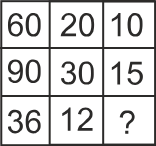
1) 6
2) 8
3) 5
4) 4
Hint: Divide the first number and second number by 3 and 2, to get the second and third number respectively.
Solution
In each row, divide the first number by 3 and the second number by 2, to get the second and third numbers respectively –
In the first column→60 ÷ 3 = 20 and 20 ÷ 2 = 10
In the second column→90 ÷ 3 = 30 and 30 ÷ 2 = 15
Similarly, follow the same pattern in the third column→36 ÷ 3 = 12 and 12 ÷ 2 = 6
So, 6 is the missing number in the given figure. Hence, the first option is correct.
The students must practice more questions about missing numbers from the e-book given below.
Missing Number Questions with Solutions PDF
Logical Reasoning Questions for Arithmetical Problems
1) Directions: One day, 90 students were travelling in a bus and the ratio of the number of boys to girls was 2: 1. The next day, the number of students remained the same, but the ratio of the number of boys to girls became 3: 2. What was the difference between the numbers of boys travelling in the bus on both the days?
1) 18
2) 6
3) 14
4) 30
Solution
Given:
90 students were travelling in a bus and the ratio of the number of boys to that of girls was 2: 1
According to the question,
2x + x = 90
3x = 90
x = 90 ÷ 3
x = 30
Therefore, Number of Boys = 60, Number of Girls = 30;
The next day, the number of students remained the same, but the ratio of the number of boys to that of girls became 3: 2
3x + 2x = 90
5x = 90
x = 90 ÷ 5
x = 18
Therefore, the Number of Boys = 54, The Number of Girls = 36
So the difference between the numbers of boys travelling in the bus = 60 – 54 = 6
Therefore, the difference between the numbers of boys travelling on the bus on both days is 6. Hence, the second option is correct.
2) Directions: A total of 60 students are travelling in a bus. The ratio of the number of boys to that of girls is 2 : 1. Then, 15 boys get down 5 girls get on the bus at the first stop, 5 boys get in and 10 girls get down from the bus at the second stop. What is the ratio of the number of boys to that of girls in the bus after the second stop?
1) 3 : 2
2) 2 : 1
3) 2 : 3
4) 3 : 1
Solution
Given:
A total of 60 students are travelling in a bus. The ratio of the number of boys to that of girls is 2 : 1
2x + x = 60; 3x = 60; x = 60 ÷ 3; x = 20
Thus, Number of Boys = 2x = 40; Number of Girls = x = 20
Then, 15 boys get down and 5 girls get on the bus at the first stop
The remaining boys after the first stop; 40 – 15 = 25
The remaining girls after the first stop; 20 + 5 = 25
At the second stop, 5 boys get in and 10 girls get down from the bus.
The remaining boys after the second stop; 25 + 5 = 30
The remaining girls after the second stop; 25 – 10 = 15
So, the ratio of Boys: Girls = 30 : 15; 2 : 1. Hence, the second option is correct.
The students must practice more questions of arithmetical problems from the e-book given below.
Arithmetical Problems Questions with Solutions PDF
Logical Reasoning Questions for Alphabet Test
1) Directions: Select the correct option that indicates the arrangement of the given words in a logical and meaningful order.
1. Sentence 2. Letter 3. Paragraph 4. Chapter 5. Book
1) 5, 4, 3, 2, 1
2) 5, 4, 3, 1, 2
3) 5, 1, 3, 4, 2
4) 5, 1, 4, 3, 2
Hint: Think about the hierarchical structure of written communication, starting from the largest unit and progressing to the smallest.
Solution
Book: A collection of chapters, usually forming a complete work or a substantial part of it.
Chapter: A division of a book, typically dealing with a specific theme or aspect.
Paragraph: A group of related sentences that focus on a single idea or topic.
Sentence: A group of words that expresses a complete thought.
Letter: The smallest unit of written communication.
So, Book→Chapter→Paragraph→Sentence→Letter
The meaningful order is 5, 4, 3, 1, 2. Hence, the second option is correct.
2) Directions: Select the option that represents the correct order of the given words as they would appear in an English dictionary.
1. Tattoo
2. Tatters
3. Tatting
4. Tattle
5. Taut
1) 2, 3, 4, 1, 5
2) 2, 4, 5, 3, 1
3) 5, 4, 3, 2, 1
4) 4, 5, 1, 2, 3
Hint: Compare the words, letter by letter from left to right, and determine their occurrence as per the dictionary.
Solution
Step 1: Compare the first two letters of each word. Since all the letters are the same, T, a, move on to the next letter.
Step 2: The third letter of each word is t,t,t,t, and u. Based on the alphabetical order of these letters, we can arrange them as Tattoo, Tatters, Tatting, Tattle, Taut
Step 3: Compare the fifth letters of (Tattoo, Tatter, Tatting, Tattle). According to the alphabetical system, the order is – Tatter, Tatting, Tattle, Tattoo.
So, the sequence is Tatters, Tatting, Tattle, Tattoo, Taut, or 2, 3, 4, 1, 5. Hence, the first option is correct.
The students must practice more questions of the alphabet test from the e-book given below.
Alphabet Test Questions with Solutions PDF
Learn More: The candidates must practice from the e-books given below:
1) Figure Counting Questions with Solutions PDF
2) Mirror and Water Image Questions with Solutions PDF
3) Direction Sense Questions with Solutions PDF
4) Syllogism Questions with Solutions PDF
5) Inequality Questions with Solutions PDF
6) Mathematical Operations Questions with Solutions PDF
7) Embedded Figure Questions with Solutions PDF
8) Figure Series Questions with Solutions PDF
9) Classification Questions with Solutions PDF
10) Critical Reasoning Questions with Solutions PDF
Logical Reasoning: Important Exams
Almost every competitive exam covers the Logical Reasoning section to check the candidate's capability to deal with a particular situation or the ability of a candidate to understand and logically work through concepts and problems expressed in the form of images, diagrams, etc.
The list of various exams is given below in which logical reasoning covers almost all topics and plays an important role in scores.
SSC Exams
SSC Multitasking
SSC Stenographer
SSC GD
SSC CHSL
SSC CPO
SSC CGL
SSC JERailways
RRB Group D
RRB NTPC
RRB ALP
RRB JEFCI
STATE GOVERNMENT EXAMS
Placement exams
Tanu Gupta, with over a decade of experience as a reasoning faculty, specializes in preparing students for various entrance examinations and career development. Her extensive work with multiple educational platforms and institutions has honed her expertise in logical and analytical thinking. Her dedication to innovative teaching methods ensures these articles provide practical insights and expert guidance.
Frequently Asked Questions (FAQs)
There are two types of questions asked in various competitive exams. The first type is verbal reasoning and the other type is nonverbal reasoning.
The topics include coding-decoding, series, blood relations, directions sense test, puzzle, seating arrangements, alphabet test, mirror images, classification, analogy, statement conclusions/arguments, syllogism etc. These are the topics covered in competitive exams rest depends on the level and syllabus of the exam.
To solve the reasoning question in a shorter time a candidate must read the information write down the important words or sentences of information in steps memorize the important ones and then extract the conclusion from the points. It makes it easy to reach a correct conclusion in a shorter time.
Practice is the only way to achieve success in Logical Reasoning questions. There is no shortcut to learning reasoning without practice.
To prepare for any competitive exam the first step a candidate must follow is to check the syllabus and accordingly start the preparation. There is a need for a thorough study of the topics after that practice the questions related to the topic followed by the mock test. A thorough study of the topic followed by practice questions and mock tests is the key to success.
Logical reasoning is defined as the ability to think logically, analyse situations and make logical and precise judgements. It is a type of problem-solving approach which works under some set of rules to reach an accurate conclusion.
Here, we'll concentrate on four different forms of reasoning: deductive, inductive, abductive, and analogous reasoning. By examining how they employ examples, rules, and outcomes, one may differentiate between these.
Aristotle was the first to create a formal framework for thinking and is regarded as the founder of western logic.
